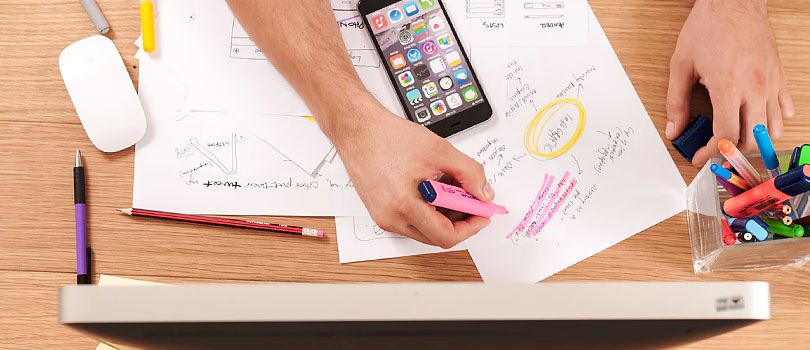We are often astounded at the variety of apps created by our designers, and every piece of their work reminds us that we are so very lucky to have them. They work on a lot of projects and constantly manage to produce vibrant solutions unique to each project.
The difference between a designer and an app designer is significant. iOS, Android, and Windows operating systems all adopt distinct styles, and users on those platforms expect a ‘native’ look and feel. Love it or hate it, a checkbox on an iPhone is a slider, it’s what they expect and it’s what we’d normally provide. If you really do hate the slider, we can put in a checkbox; we can customize almost every part of your app if needed and create a device agnostic operation, but it isn’t usually what users expect or want. It’s hard to use an Android phone effectively if you’re an iPhone aficionado, and vice verse – the platforms are just very different; the changes are apparent from every level down from the main screen to the way a checkbox is rendered. Our designers know the platforms well, and know how to make a design that fits best for your app.
Another significant difference between a designer and an app designer is their knowledge of screen sizes and resolutions. Sure you can go online and find out the resolution of an iPhone 7 and setup Photoshop to those dimensions, but wouldn’t it be better if you knew that Sketch was a better tool for the job and made it super easy to export the 2 different image sizes needed for iOS and 3 sizes needed for Android apps. The app designer will provide developers with the design assets they need while the inexperienced designer fumbles with Google searches.
Sometimes our clients come to us with designs they’ve used for previous app versions or investor pitches, and we can often work with these designs to produce an app. In these cases we will put you in a room with a designer so they may learn more about your app, the proposed design, and your vision. Depending on your circumstance, some options may be:
- Contact the previous designers to inform what assets are needed. This conversation can get a little tricky, as you need graphics in specific formats, font information, etc.
- Create a new design with a fresh vision.
- Update the design if elements are poorly structured, styled, or missing.
- Convert the design and extract assets needed by developers.
We use InVision by Adobe to present app designs to clients; this excellent and widely used service allows us to put your design online, and provide you with a link to setup a free account to see the design in your browser. InVision is a great product for this purpose; it is very accessible, there are good features for providing feedback about design elements, and you can even click between screens in the design like it’s a real app. We talk more about InVision in the next topic, presentations and prototypes.
